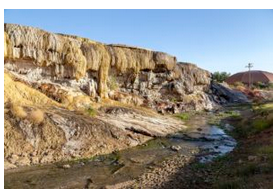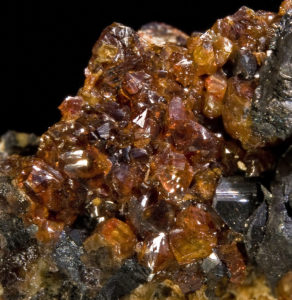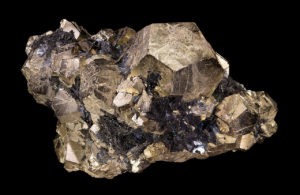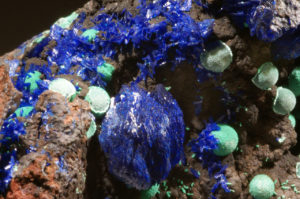4.2.3: Hydrothermal Minerals
- Page ID
- 19134

If chemical precipitation occurs at elevated temperatures, we call the process hydrothermal. Travertine and tufa, deposited by hot springs, are examples of hydrothermal deposits. Both are composed of calcite that precipitated from hydrothermal solutions, but tufa is more porous than travertine. The photo shows travertine terrace deposits in Wyoming.
Hydrothermal minerals are also created underground. Occasionally, hot circulating groundwater deposits minerals in sufficient quantity to make a valuable ore deposit. Minerals deposited this way include oxides, sulfides, and some others. Hydrothermal ore deposits vary. In some, ore minerals are concentrated in veins or vugs, in others they are disseminated throughout a body of rock. The table below lists some common hydrothermal ore minerals.
| Minerals Common in Hydrothermal Ore Deposits | ||
| mineral class | mineral or mineral series |
chemical formulas |
| sulfide | pyrite pyrrhotite chalcopyrite galena sphalerite molybdenite |
FeS2 Fe1-xS CuFeS2 Pbs ZnS MoS2 |
| tungstate | wolframite | (Fe,Mn)WO4 |
| oxide | magnetite cassiterite pyrolusite |
Fe3O4 SnO2 MnO2 |
| native elements | gold silver |
Au Ag |
Many spectacular mineral specimens come from hydrothermal deposits. Hydrothermal minerals are often brightly colored because they contain transition metals. Many are metallic and many form highly symmetrical crystals. The photos below show three examples.





